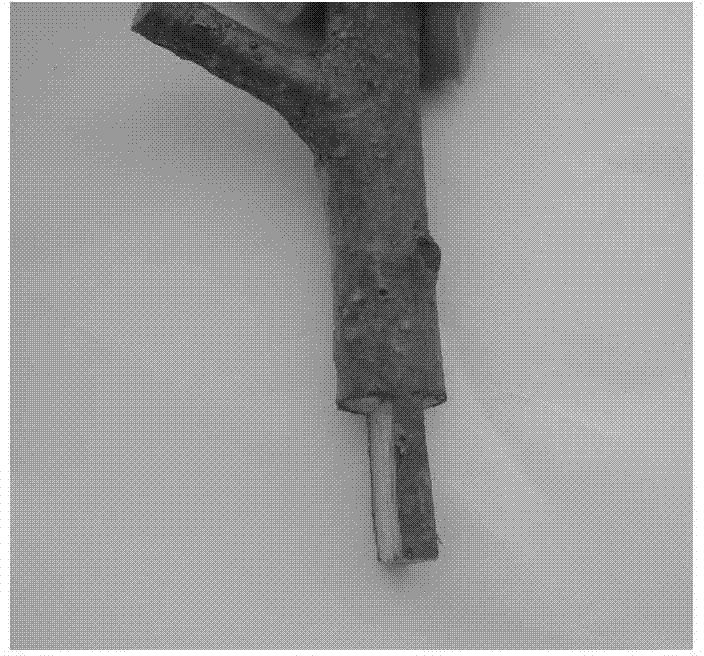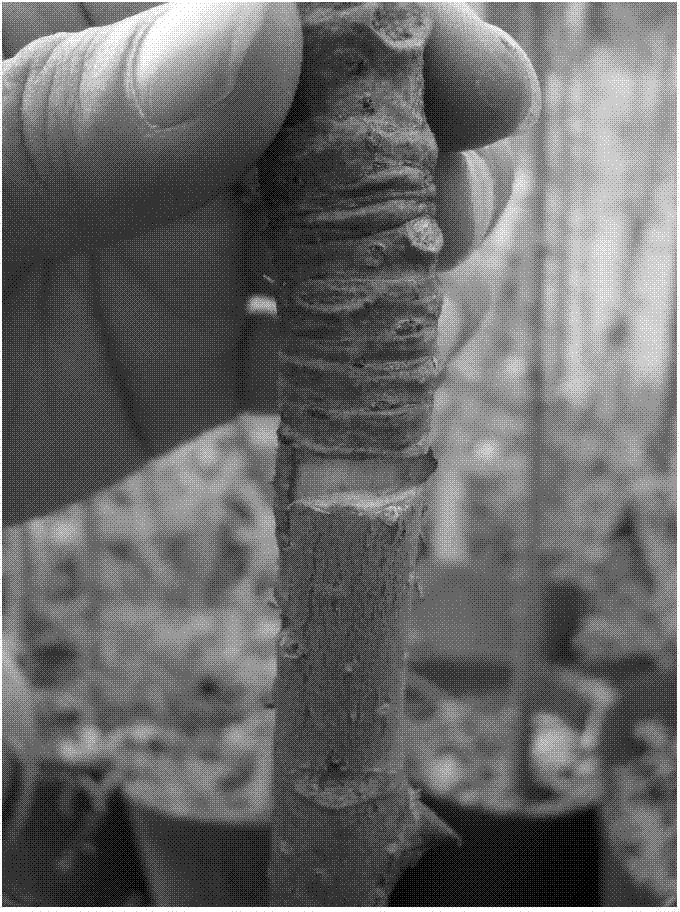Grafting method for improving wind resistance of cotton tree grafted seedling
A technology for grafting seedlings and kapok, which is applied in the field of plant cultivation, can solve the problems of unfavorable preservation of maternal genetic traits, small contact area of phloem, poor interface healing effect, etc., to achieve protection and large-scale production, improve seedling quality, interface Healing smooth effect
- Summary
- Abstract
- Description
- Claims
- Application Information
AI Technical Summary
Problems solved by technology
Method used
Image
Examples
Embodiment 1
[0026] Embodiment 1: a kind of grafting method that improves kapok grafted seedling wind resistance
[0027] 1) Selection of rootstocks: from early winter to May of the following year, select healthy kapok seedlings that are 1-2 years old, 2-3cm in diameter at breast height, 1.5-2m in height, and free from diseases and insect pests as rootstocks;
[0028] 2) Selection of scions: Cut 2-year-old upright branches with the same size as the rootstock diameter at breast height from the flowered kapok mother tree, with full buds, to make scions, and the scion length is 6-8cm;
[0029] 3) Use concave-convex scarfing method for grafting. The specific operation is: cut the rootstock at a distance of 1.2~1.4m from the ground, and cut the cutting surface of the rootstock into a "concave" shape. The groove is centered, and the concave part is perpendicular to the cutting surface. 3~4cm, width 0.5~0.8cm (such as figure 2 shown); cut the cut surface of the scion into a "convex" shape...
PUM
| Property | Measurement | Unit |
|---|---|---|
| Dbh | aaaaa | aaaaa |
Abstract
Description
Claims
Application Information
 Login to View More
Login to View More - R&D
- Intellectual Property
- Life Sciences
- Materials
- Tech Scout
- Unparalleled Data Quality
- Higher Quality Content
- 60% Fewer Hallucinations
Browse by: Latest US Patents, China's latest patents, Technical Efficacy Thesaurus, Application Domain, Technology Topic, Popular Technical Reports.
© 2025 PatSnap. All rights reserved.Legal|Privacy policy|Modern Slavery Act Transparency Statement|Sitemap|About US| Contact US: help@patsnap.com



